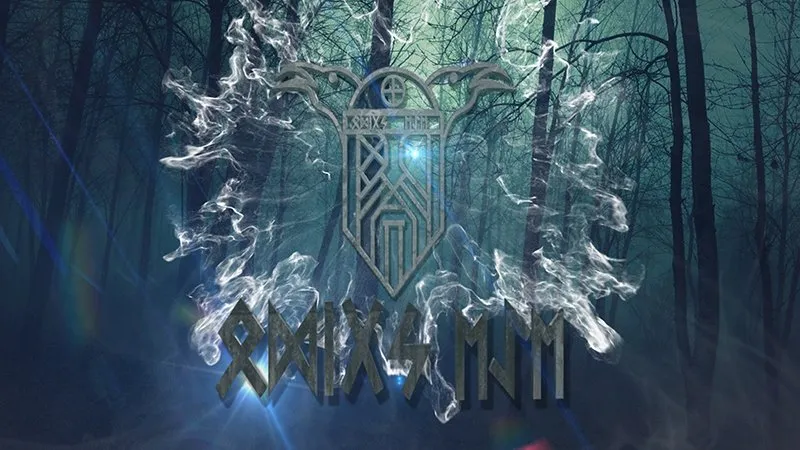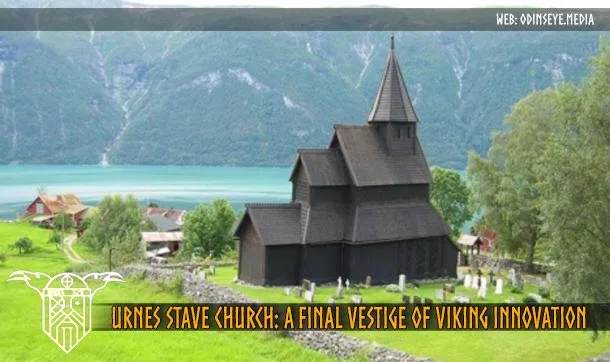
At the edge of the world lies the last trace of Viking Christianity. Urnes Stave Church (c. 1130 AD) stands tall in Sognefjord in the west of Norway, yet it represents as much of an end as it does a new beginning. The church at Urnes is one of the last surviving examples of early Christian Scandinavia architecture, a rather lonely survivor which once had over 1300 siblings. Inspired primarily by the shipbuilding designs and pre-Christian mythology of the Viking culture, the northern architects of Urnes incorporated elements of Celtic and early Romanesque art. Interestingly, the method by which the Norsemen viewed these exterior artistic styles was due to those very same Viking ships.
During the early years of Christianity, particularly the 11 th century, there was a dramatic rise in church building due to the newly Christian leaders. But despite the new religion, the architects of the churches clung to the familiar. Though their attention to verticality was likely borrowed from early Romanesque influences in Britain, the Norse architects looked first to the pagan worship buildings called heathen hofs for the choice of post and lintel construction, and then to their powerful shipbuilding enterprise for the incorporation of dragon heads. Such images would have been familiar for worshippers of the new religion, and undoubtedly a comforting sight to the Scandinavians about to embark on a new Christian journey.
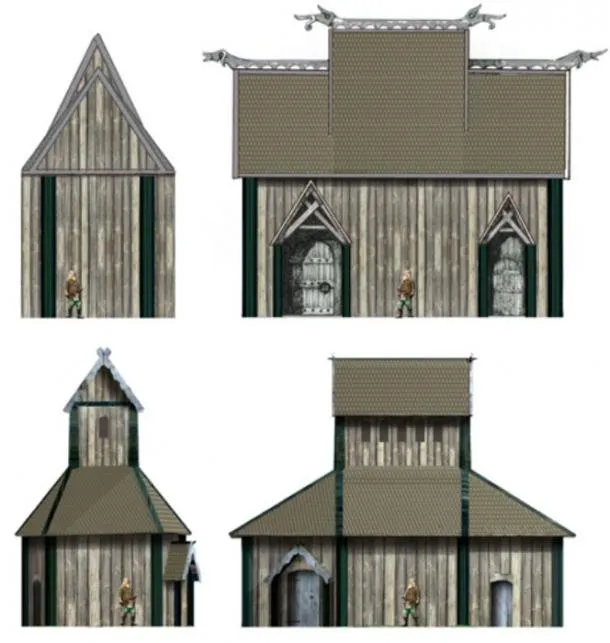
Typical Timber Construction
Urnes Stave Church followed the typical construction of previous northern churches; they were constructed using a simple post and lintel design. In fact, the word stav is the Norwegian for "post." As with the majority of Scandinavian architecture, Urnes Stave church is made of timber, a readily accessible material in the area, though not conducive for longevity, as seen by the lack of other early medieval sites. Due to the architects' skills in shipbuilding, manipulating timber into this new form was an easy transition. Further, one can see evidence of marine influence in the interior of the stave churches. This, once again, is likely because the early Christian Norsemen borrowed from what they already excelled at architecturally: shipbuilding.
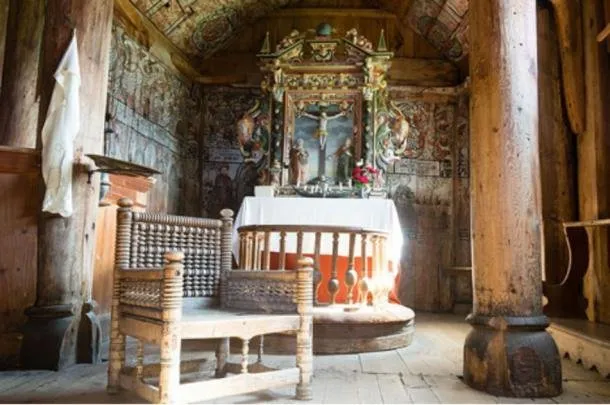
The interior roofs—as seen in Urnes, though shown here in the reconstruction of Borgund Stave Church (Borgund Stave Church is used in this article as both a comparative example and an illustration of the evolution of stave church architecture from its beginnings to its end.) —are essentially inverted ships, while on the exterior, carved dragon heads growl down from ridge crests. These heads are intended to recall to the viewer’s mind the warships that once terrorized the coastlines of new lands before making landfall and laying siege. According to scholar Olaf Olsen, there is no other source for the style of the stave churches except indigenous Norway itself, which lends credibility to their choice to incorporate ship designs. By the time Urnes Stave Church was constructed, however, incorporating dragon heads were no longer typical of church architecture, and the interior was more than a single room, following the Romanesque basilica blueprint. The serpentine dragon was replaced by positive symbolism of rebirth.
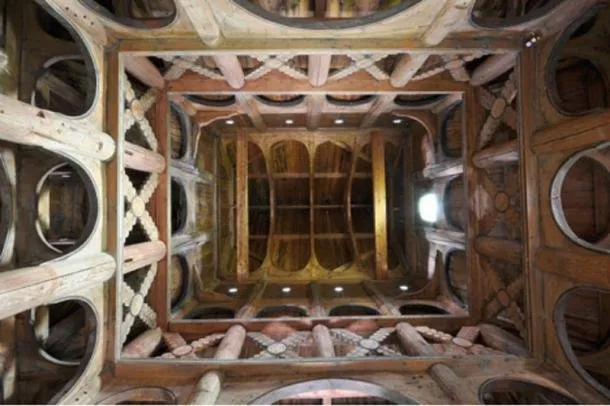
Vestiges of Norse Mythology
In Sturluson's Poetic Edda, the World Tree played one of the most important roles in the tale. Called Yggdrasil for its relationship to Odin, the World Tree spans the entirety of the universe: its leaves reach to the very heights of heaven and its roots touch the bowels of hell. Because of its interconnectedness, it is the only thing to survive Ragnarök, and it shelters the Adam and Eve of the Norse world: Lif and Lifsandir. Urnes Stave Church represents the best surviving example of the way in which rebirth was pertinent to the imagery of the new Christian structures. These new churches are the protectors of this new religion, just as Yggdrasil protected Lif and Lifsandir.
Looking at the north portal of Urnes Staves Church, the intertwining, interwoven vines and leaves are intended to be representative of Yggdrasil. The style of the portal is the Urnes style, which developed around 1050 AD—possibly in Sweden—but takes its name from this particular church. The branches are entangled in what appears to be disarray across the portal, however this was a standard aspect of Viking and early medieval art, more identifiable as Yggdrasil by the creature in the lower left corner. The Urnes technique is categorized by stylized animals, slimly interwoven into patterns. Animals have almond shaped eyes with their heads shown in profile, and tend to be curving in an upward fashion. These techniques are evidently seen on the Urnes portal as the serpent Níðhöggr is shown with the aforementioned almond eyes tightly twisting upward.
...
Read the rest on Ancient Origins
Further reading and sources
